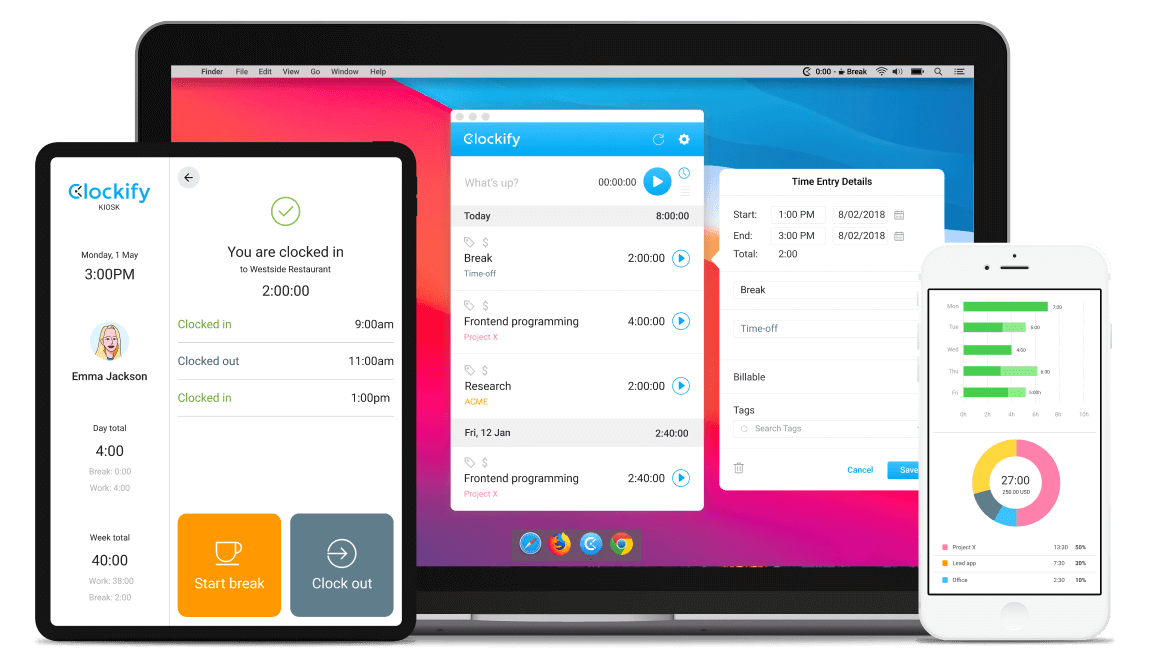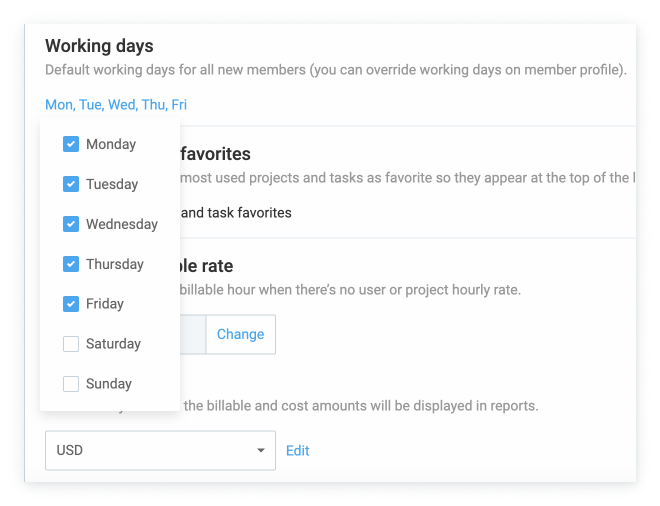The 9-5 workday is officially dead — sorry to break it to you.
In fact, many employees switched to working swing shifts.
But what are swing shifts, really?
A swing shift means you get to work irregular schedules. In other words, your work swings from one period to another depending on the workday, workweek, or other work periods.
For example, some days may require you to work hours between the day shift and the night shift — say, from 2 p.m. to 10 p.m. On other days, you may need to divide your single 8-hour shift into 2 shorter work shifts during the workday.
We know — it’s a mess.
To get to the bottom and usefulness of the swing shift, we’ll cover everything on this type of schedule, including:
- What a swing shift is,
- How and where to apply swing shifts, and
- What the benefits and drawbacks of swing shift schedules are.
So, what’s the deal with swing shifts? Let’s explore.

What is a swing shift?
A swing shift is a type of work shift that typically happens between daytime and overnight shifts. This means that it starts around the afternoon and ends late at night.
To get more insight, we turned to Merriam-Webster’s dictionary and found that a swing shift represents “the work shift between the day and night shifts (as from 4 p.m. to midnight)”.
Still, this definition isn’t carved in stone. In fact, it varies from sector to sector, but a swing shift usually covers 8 or more work hours. Similarly, a swing shift doesn’t always have to start in the afternoon — it can also begin in the morning and end in the next 8 to 12 hours.
For simplicity’s sake, swing shifts often happen outside regular 9-5 business hours.
Generally speaking, companies with continuous operations need swing shifts to cater to the needs of their customers 24/7 or to simply uphold company standards.
Due to the nature of their business of around-the-clock protection, a private security business may need its employees to work in the following periods:
- 10 a.m. to 6 p.m. on one week,
- 3 p.m. to 11 p.m. on another week,
- 6 p.m. to 2 a.m. on a different week — and so on.
Before we go any deeper into the nitty gritty of swing shifts, let’s quickly clarify a mistake people often make. That’s right — the difference between swing shifts and rotating shifts.
Swing shift vs. rotating shift
Many people confuse the swing shift with the rotating shift. To clear the confusion, a rotating shift is a type of swing shift.
To give an example of the rotating shift, let’s look at a waiter at a prominent restaurant. This employee may be called in by the employer to work 12-hour morning shifts for 6 weeks straight, and then work 12-hour evening shifts for the next 6 weeks.
With the rotating shift, employees may have to alternate between evening shifts, night shifts, and day shifts every few days, weeks, or months.
Curiously, the rotating shift comes in many shapes and sizes. For example, the DDNNOO work schedule is one of the most popular techniques for organizing your rotating shift. In short, it entails working 2 day shifts, then working 2 night shifts, and finally taking 2 days off.
For practical purposes, swing shift is an umbrella term for many different shift schedules, including rotating, evening, day shifts, and other types of shifts. Simply put, you are working a swing shift when you switch between different work schedules every few days, weeks, or months.
💡 Clockify Pro Tip
Learn how to schedule your rotating shifts with our head-on comparison of the best scheduling software on the market:
How does a swing shift schedule work?
A swing shift schedule differs from a day shift and a night shift schedule because it sometimes entails working 8+ hours. For illustration, a swing shift schedule typically includes the following patterns:
- 8-hour workday for a week or month,
- 10-hour workday for a week or month, and
- 12-hour workday for a week or month.
As you may have guessed, a swing shift schedule is usually inconsistent with how life unfolds. For example, it creates plenty of turbulence.
Nevertheless, efficient shift management always has to factor in ever-changing client needs and company requirements, including periods of increased business activity, holidays, vacations, etc.
Therefore, employees must organize their lives around the company and client needs, disrupting the employee’s health and social life.
Suddenly, a manager may decide to institute a swing shift schedule for a week. On another occasion, they may have to introduce a swing shift schedule for a span of a month. There really is no hard and fast rule.
Typically, swing shift workers don’t have a lot of say in choosing their monthly, weekly, or even daily schedules. Yet, managers sometimes ask their employees to state their preferred swing shift type for an upcoming period — i.e., when plans are underway. In this case, workers may choose to work the split shift for the next month or the third shift for the next week.
Be that as it may, swing shift hours come in many shapes and sizes.
So, let’s look at a few.
What are a few common types of swing shifts?
To wrap your head around the concept of hours worked during swing shifts, here are a few types of swing shifts in a simple table:
| Swing shift type | Explanation |
|---|---|
| First shift (or morning shift) | Covers hours similar to those of the traditional 8-hour workday, like a 9-5. |
| Second shift (or evening shift, afternoon shift) | Entails work hours from around 3 p.m. or 4 p.m. and lasts for 8 or more hours. |
| Third shift (or night shift) | Starts when the second shift is done, usually between 10 p.m. and 12 a.m., ending sometime around 6 a.m. to 8 a.m. |
| Split shift | Happens when an employee works 2 shifts in a single day. For example, they may first work from 10 a.m. to 2 p.m. and then from 4 p.m. to 8 p.m. |
| Rotating shift | Implies that an employee switches between first shifts, second shifts, and third shifts for around 12 hours straight per shift — for a period of a few days, a week or a month. |
| Flex shift | Has to do with workers choosing their start and end times within a timeframe — they can decide to start working between 7 a.m. and 10 a.m. and clock out 8 hours later. |
| Fixed shift | Means that employees have the same type of swing shift for a prolonged period — for illustration, an employee may consistently work first shifts or second shifts for a month or longer; this type of swing shift has a longer period of fixed work hours than other types of swing shift, but it’s still a swing shift because work hours change at some point (even after a month). |
So far, so good — but what’s a real-life example of a swing shift?
We’re so glad you asked!
What is an example of a swing shift?
Imagine you run a private security business in the US. With many employees spread out on the ground in different locations, you’ll need to assign shifts so that the individuals or buildings you’re tasked with protecting aren’t left unsupervised for a second. To do this, you’ll probably have to juggle a few schedules to make things run smoothly.
For example, a security staff member specialized in safeguarding high-level executives may need to protect a wealthy individual for 12 hours every day for 4 days straight. After those backbreaking 4 days, they may get 3 days off of work.
Here’s how that looks in a simple list:
- Monday: 11 a.m. to 11 p.m.
- Tuesday: 11 a.m. to 11 p.m.
- Wednesday: 11 a.m. to 11 p.m.
- Thursday: 11 a.m. to 11 p.m.
- Friday: Off
- Saturday: Off
- Sunday: Off
In this example of a swing shift job, the physical security guard works 12 hours a day for 4 days straight. After that, this employee enjoys 3 days off in a row.
In another common shift pattern, security guards work 4 days and rest 2 days — this is called the 4 on 2 off schedule for obvious reasons.
And that’s it — that’s how swing shift works in a sector like security. Yet, note that the exact weekdays and work hours will depend on the following:
- Industry conditions,
- Employer standards, and
- Client requirements.
💡 Clockify Pro Tip
Want to maximize your swing shifts and get more productive work done? Explore how to use a clocking system for your business:
Common swing shift jobs
If you’re applying for a swing shift job, you probably had to search the web for its meaning. So, what does swing mean on a job application? Simply put, it means that you’ll be working irregular schedules for days, weeks, or even months on end.
Some of the most common swing shift jobs include:
- Healthcare professionals,
- Retail workers,
- Hospitality employees,
- Transportation and public safety officials,
- Customer support and service professionals, and others.
For some of these sectors — healthcare, retail, and emergency services — we often see both rotating shifts and other types of swing shifts.
Let’s get to each in more detail.
#1 Common swing shift job: Healthcare
Emergency rooms and hospitals must have staff on-site 24/7 to provide care for patients.
Yet, this type of work can often be burdensome due to the changing shift schedules. For example, the authors of the book Nursing Management in the New Paradigm suggest that the day shift provides better results than other nursing shifts:
“Day shift nurses had scores closer to the ideal scores, with stronger achievement, self-actualizing, humanistic-encouraging, and affiliative scores than nurses on the other shifts.”
For honesty’s sake, the nursing staff typically doesn’t get to choose their schedules. Still, shift managers in hospitals often take into account several factors when they assign specific swing shifts, including:
- Number of patients,
- Complexity of the care provided,
- Known discharges and admissions, and
- Staff availability.
Apart from that, shift managers also consider things like which employees can better stand the night shift compared to the day shift.
Finally, nurses make up a critical part of healthcare because they are usually the first ones to spot negative health trends in patients and alert doctors.
#2 Common swing shift job: Retail
Grocery stores and supermarkets need to have their shelves stocked day and night so that customers can buy at any moment. And this means working outside regular business hours.
As a result, some US cities handle the issue of unpredictable schedules of retail workers fairly well, including:
- Chicago,
- Philadelphia,
- Los Angeles, and
- New York City.
The last from the list, New York City introduced the Fair Workweek Law that prescribes that retail employers within city limits must “give workers their work schedules 72 hours before the first shift on the schedule.”
With 3,640,040 retail employees working in the US as of 2022, millions in the country stand to benefit from the Fair Workweek regulations.
#3 Common swing shift job: Hospitality industry
Hotels and restaurants typically work for extended periods of the day — and some provide services long into the night. Thus, employers in this sector have to ensure somebody is serving the customers whenever they require assistance.
In the hospitality industry, shift managers often schedule longer shifts since customers expect prolonged business hours. That’s the case especially during rush hour, the holiday season, or when more visitors are expected.
On a similar note, a Washington Post article suggests that job openings in the hospitality industry are sky-high in 2023, reaching almost 2,000,000 positions. All this fuels the belief that people joining this industry have many options to choose from.
💡 Clockify Pro Tip
Pick a restaurant management software that suits your business — with our comprehensive blog post:
#4 Common swing shift job: Transportation
According to the US Bureau of Labor, more than 108,000 flight attendants work in the country as of 2022. With millions of flights yearly, this huge workforce caters to the needs of customers from around the globe.
On a different range of the transportation sector, almost 2,000,000 truck drivers are employed in the United States. These workers help move products and materials from one place to another at short notice, benefiting a multi-trillion-dollar industry. Notably, transporting goods and merchandise often occurs outside rush hours — in the late evening and early morning.
Thus, shift managers in charge of flight attendants and truck drivers often need to introduce different kinds of swing shifts so as not to delay flights or let products get spoiled.
In the case of truck drivers, it’s critical that they are well-rested and get the appropriate amount of sleep. So, shift managers also have to allow for a suitable number of days off and create well-balanced shift schedules.
Finally, flight attendants often suffer from jet lag. Due to this, it’s vital for shift managers to let flight attendants recover after long flights.
#5 Common swing shift job: Public safety
Police officers and firefighters usually have swing shifts as they must provide emergency services to citizens in need around the clock. These professionals benefit the general public by ensuring everyone is safe and sound.
But how many people work in these roles that require swing shifts?
In line with the latest data, the European Union had over 1,510,000 police officers in 2021 alone. As for other public safety jobs, EU countries employed around 365,000 firefighters in the same year.
Swing shifts are particularly popular in the public safety sector. There, workers can assist citizens 24/7 thanks to a work schedule organized around the needs of the general public.
#6 Common swing shift job: Customer support and customer service
Software companies, for example, hire customer support agents to ensure their clients always have somebody to talk to in case of software bugs or related issues.
Customer Support Manager at CAKE.com, Milan Tankosić, says that his team works 3 shifts. They operate in morning, afternoon, and night shifts to meet client requests in any time zone. He told us that the company’s customer support team is front and center when it comes to helping customers:

“Full coverage is critical every single day because our support team is the first to spot server downtime and alarm the developer team. In fact, we also need to ensure full uptime of our app.”
Apart from that, he explains that swing shifts provide a not-so-routine lifestyle:

“Swing shifts can impact work-life balance, because humans are designed to sleep at night. Yet, some people are night owls and others dislike getting up early in the morning to work. For me, swing shifts made a lot of sense as long as I could plan my schedule for at least a few weeks or months ahead.”
All this applies to customer service roles as well. When you need your car fixed ASAP or something unexpected happens on the road, you want to have a car pickup service provider who can quickly help you out.
—
With that in mind, let’s take a look at a few major benefits of introducing swing shifts, both for the employer and employees.
What are the benefits of swing shifts?
The advantages of swing shifts are numerous and vary from sector to sector. Yet, here we’ll present a few most notable benefits, including:
- Higher pay,
- Better customer retention, and
- Less time spent in rush hour.
Let’s get to it.
Swing shift benefit #1: Higher pay
Employers frequently offer shift differentials, a 10-15% increase in payment for working irregular hours — according to a 2023 Forbes article. This slight raise is usually paid to employees who work outside regular business hours.
In other words, the shift differential is a kind of reward for people who decide to work less desirable hours, like 6 p.m. to 2 a.m.
Yet, a shift differential isn’t a hard and fast rule in all companies. Instead, it depends on the employer and sector.
💡 Clockify Pro Tip
Protect your financial situation by understanding how employers calculate pay in the workplace:
Swing shift benefit #2: Better customer retention
It’s no mystery that customers prefer to have around-the-clock support in most sectors. This rings especially true in IT and hospitality — where support staff provide guidance for resolving issues on the fly.
A 2022 report by McKinsey has shown that company leaders are increasingly focused on improving customer service and customer experience. In fact, the article’s authors claim that businesses are looking for ways to improve their organizational culture, “With 3 out of 5 surveyed leaders citing attracting, training, and retaining talent as a top priority.”
Thus, companies will be more likely to retain customers if they offer 24/7 top-notch coverage to cater to their needs. And employers are increasingly realizing that.
Swing shift benefit #3: Less time spent in traffic
London, Chicago, and Paris comprise the 3 most congested cities in the world. And so, many employees spend plenty of time stuck in traffic. A less than desirable situation — especially when we consider that today commuters spend hundreds of dollars more on fuel than in previous years.
But swing shift workers operate under irregular hours. As a result, those who work flex shifts and second shifts (both types of the swing shift) in particular weeks or days, tend to avoid rush traffic hours. In effect, this means they get to the workplace faster and get home equally quickly — or at least quicker than most workers.
💡 Clockify Pro Tip
If you want to learn a few fascinating things about why and how people commute worldwide, read our article:
What are the disadvantages of swing shifts?
Although swing shift times can yield vast benefits, this type of work schedule also comes with a cost.
In this segment, we’ll explore 3 major drawbacks of swing shifts, including:
- Negative impact on social life,
- Less time off, and
- Burnout and mental fatigue.
Let’s dive right in.
Swing shift disadvantage #1: Negative impact on social life
Suppose you work swing shifts, leaving you to get off work only in the late evening. In this case, you may consistently miss out on many opportunities to hang out with friends and family for a week or month.
The swing shift clashes with most people’s working schedules. As a result, this can lead to missing get-togethers with loved ones. In fact, a swing shift schedule makes it harder for employees to:
- Take care of family responsibilities (like childcare),
- Plan personal commitments,
- Adjust sleeping and eating habits, and
- Engage in social activities.
For illustration, a late-2020 comparative study has shown that hospital nurses — who often work night shifts or irregular schedules — endured various consequences. These effects include a diminished ability to function in a social context, e.g., around family and friends.
💡 Clockify Pro Tip
Triple your productivity by organizing your life with 5 concrete strategies in our article:
Swing shift disadvantage #2: Less time off
Swing shift jobs aren’t as frequent as the rest of the jobs on the market. So, it’s often challenging for employers to allow swing shift workers to request time off, as employers won’t be able to find cover for their shifts.
Yet, many countries have regulated this segment of their labor laws differently.
For example, the Australian government prescribes that some shift workers get 5 weeks of annual leave every year, in line with their National Employment Standards’ definition. That’s in contrast to the 4 weeks of annual leave for full-time and part-time workers in the country.
In comparison, the US has yet to regulate this area.
💡 Clockify Pro Tip
Learn about the difference between paid time off and vacation in our knowledge-intensive blog post:
Swing shift disadvantage #3: Burnout and mental fatigue
Burnout and mental fatigue comprise two of the most prominent pitfalls of swing shift hours. One of the reasons is that a swing shift schedule forces employees to get used to working non-traditional hours. In turn, this work schedule disrupts sleep patterns, delivering severe blows to your at-work productivity.
For example, an article out of Harvard Medical School refers to this problem as shift work disorder. In fact, the authors of the same article claim that shift workers can succumb to health risks “because shift work disrupts the body’s normal alignment with the 24-hour sleep-wake cycle called the circadian rhythm.”
Similarly, the article suggests that shift workers are misaligning their sleep hours with the natural cues to be asleep or awake — meaning sunlight or a lack thereof. As a side effect of sleep deprivation, swing shift workers can suffer from mental fatigue while performing job duties.
💡 Clockify Pro Tip
Find out how to stop yourself from overworking with a few quick steps:
—
Next, let’s get to a curated list of timeless tips to help you integrate your swing shift schedule into your workflow.
Tips on how to introduce a swing shift in your business
Around-the-clock coverage and increased productivity — these are the top 2 reasons why a swing shift can benefit your business. Here, we’ll provide a few time-tested strategies to make your company operations even more efficient.
In this section, you’ll read about 3 things that may help you out on your way to introduce swing shift in your business, including how to:
- Implement employee scheduling software,
- Use team chat apps to communicate effectively, and
- Plan swing shift schedules with your team.
Let’s make it short and sweet!
Tip #1: Implement employee scheduling software
First and foremost, the best and fastest way to make shift scheduling a breeze is to introduce employee scheduling software. Unlike paper-based scheduling, software of this kind allows you to easily:
- Create optimized shift schedules,
- Keep tabs on who’s working which shift,
- Visualize milestones and projects,
- Track time off, and much more.

In Clockify, you can see what your workforce is up to through an app or the kiosk station. In fact, your employees can seamlessly clock in, start breaks, and clock out with a single click.
Apart from that, you can customize working and non-working days per employee. In this case, you can know exactly who works the first, second, or third shifts this week.

Similarly, you can use the “repeat schedule every X weeks” option to determine which employees work which shifts.
All this helps your company focus on the real work instead of constantly chasing different employee schedules.
Tip #2: Use team chat apps to communicate effectively
A lack of open and frequent communication can stifle team cohesion. In turn, this results in poor management of work schedules when it comes to swing shifts.
For the best results in shift scheduling, we recommend using team messaging apps. For a quick setup, you need to find an app that:
- Works across platforms and operating systems,
- Features integrations with project management platforms,
- Has affordable pricing plans for small and large teams, and
- Offers advanced team collaboration features like sharing multimedia files.
Geared with a team chat app, you can easily communicate schedules and shift changes with your employees. In turn, this allows you to avoid downtime in your business, leading to greater customer satisfaction.
Tip #3: Plan swing shift schedules with your team
Yet, team communication needs to go one step further. Every once in a while, we recommend conducting regular check-ins with your team to find out which shifts work best for them.
Customer Support Manager Milan Tankosić — whom we spoke to earlier — told us that sometimes you need approval from your team to make swing shifts work:

“If possible, give the opportunity to your customer support agents to let you know about their preferences when it comes to types of swing shifts and what kind of rotations they’d like to see in their work schedules — whether weekly, biweekly, or monthly.”
Next, he provides a tip on how to plan better swing shifts:

“Having a swing shift schedule ready by the 15th of every month allows me to help our customer support agents organize their days properly. With this predictability, employees could better allocate their time — and plan their personal and work responsibilities accordingly.”
💡 Clockify Pro Tip
What separates a good team from a mediocre team? Learn this and much more in our article:
FAQ about swing shifts
Near the end of this article, let’s quickly discuss a few common concerns of future or current swing shift workers — and managers — who may struggle to keep up with their rigid work schedules.
1. Is a swing shift healthy?
Research suggests that working swing shifts may lead to anxiety-related symptoms. Still, swing shift workers aren’t necessarily doomed to sickness.
Instead, some types and patterns of swing shifts are more favorable than others when it comes to your physical and mental well-being.
For example, working the first and second shifts allows employees to rest and get a good night’s sleep. On the other hand, you can nurture your friendships or provide childcare better if you work a flex or fixed shift schedule.
So, it’s entirely possible to stay healthy and connected to your social circles, family, and children if you make your swing shift schedule slightly adjust to how you usually go about your life.
Note: All this data doesn’t equally apply to every single industry. In fact, it depends on how the employer schedules swing shifts or how the employee prefers to work. In other words, it’s a mixture of personal preferences, health considerations, and company requirements.
2. How do you survive a swing shift?
A swing shift can be hard on your body. But you can survive a swing shift and be more alert during one by:
- Keeping on bright lights whenever possible,
- Taking moderate exercise and short breaks,
- Eating well and healthy,
- Avoiding to rely on caffeine, and
- Changing your sleep schedule to fit your swing shift.
Of course, we aren’t saying that you’ll be able to implement all these things at once. Instead, see what works for your situation best.
3. What is a 7-day swing shift?
The 7-day swing shift occurs on a 4-week cycle.
In this schedule, employees work for 21 days in total and enjoy 7 days off in total during the 4-week cycle. With the 7-day swing shift, teams get to:
- Work 7 day shifts and enjoy 2 days off,
- Work 7 swing shifts and enjoy 2 days off, and
- Work 7 night shifts and enjoy 3 days off.
One of the benefits of the 7-day swing shift is that it lets employees work shorter shifts than teams on 10-hour shifts (typically for 8 hours per shift). On the downside, workers are rarely off on weekends.
4. What is a 12-hour swing shift?
The 12-hour swing shift — also called the 12-hour rotating shift — works something like this:
- Work 12 hours for 3 day shifts straight, then enjoy 2 days off,
- Work 12 hours for 4 night shifts straight, then enjoy 3 days off, and
- Work 12 hours for 3 day shifts straight, then enjoy 2 days off.
In terms of achieving work-life balance, the 12-hour swing shift is one of the most challenging. The reason? Well, it doesn’t allow you to keep a steady sleep schedule and maintain social interactions as other types of shifts do.
5. What is the difference between day shift and swing shift?
A day shift worker may start working in the early morning hours and be done with work by 5 p.m. at the latest. For example, an employee on day shifts can work in the following timeframes:
- 6 a.m. to 2 p.m.,
- 8 a.m. to 4 p.m., or
- 9 a.m. to 5 p.m.
In contrast to the day shift, swing shifts typically happen in the following periods of day:
- 3 p.m. to 11 p.m.,
- 4 p.m. to 12 a.m., or
- 5 p.m. to 1 a.m.
Unlike the day shift, the swing shift usually covers late afternoons and evening hours.
Wrap-up: Optimize swing shift schedules for best business outcomes
The swing shift isn’t going anywhere. In fact, its many shapes and sizes are here to stay in industries like retail, hospitality, and public safety.
To recap, the swing shift is an umbrella term encompassing many different work schedules, like split, fixed, first shift, and many others. The key is that the work schedules and work hour duration change over days, weeks, or months.
To check what you’ve learned, let’s take a look at a few benefits and drawbacks of swing shifts.
In short, swing shifts help you:
- Get paid better,
- Retain more customers, and
- Spend less time in traffic.
On the downside, a swing shift schedule can:
- Impact your social life negatively,
- Allow for less time off, and
- Cause burnout and mental fatigue.
Finally, here are a few hard and fast rules that can help you make swing shifts an integral part of your company’s work:
- Introduce employee scheduling software,
- Use team chat apps for better communication, and
- Get buy-in from your team to plan swing shift schedules.
✉️ Got any tips, suggestions, or questions on swing shifts? Drop us an email at blogfeedback@clockify.me for a chance to have your questions answered or your suggestions and tips featured in future updates of the post. Also, if you liked this blog post, share it with someone who might benefit from reading it.



